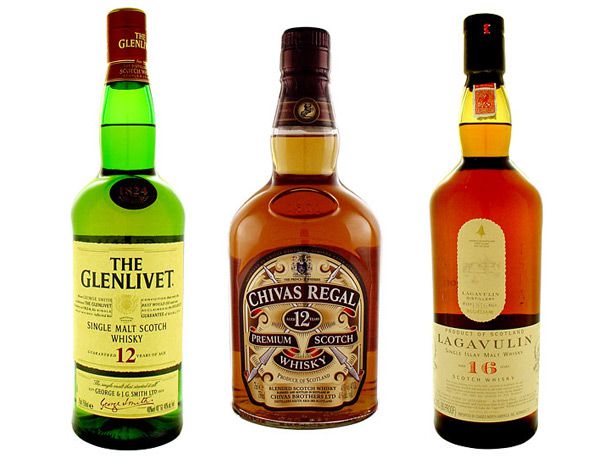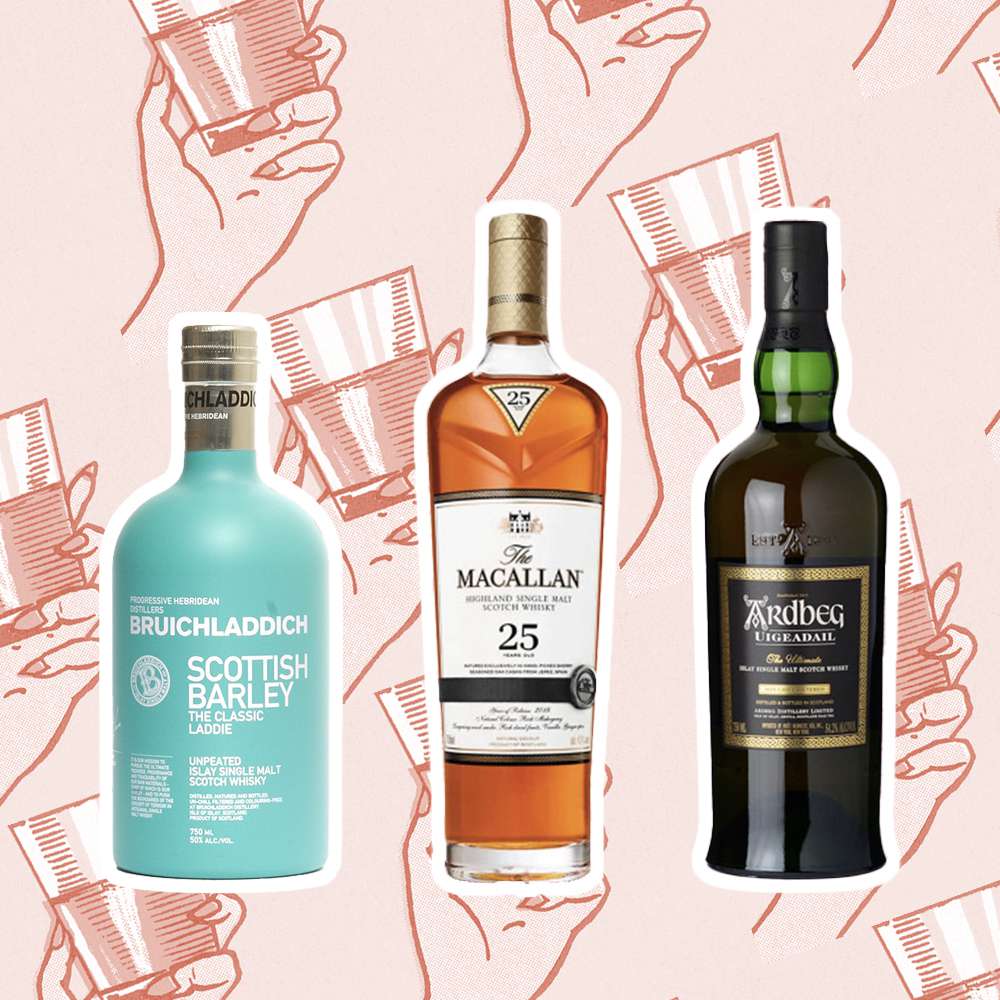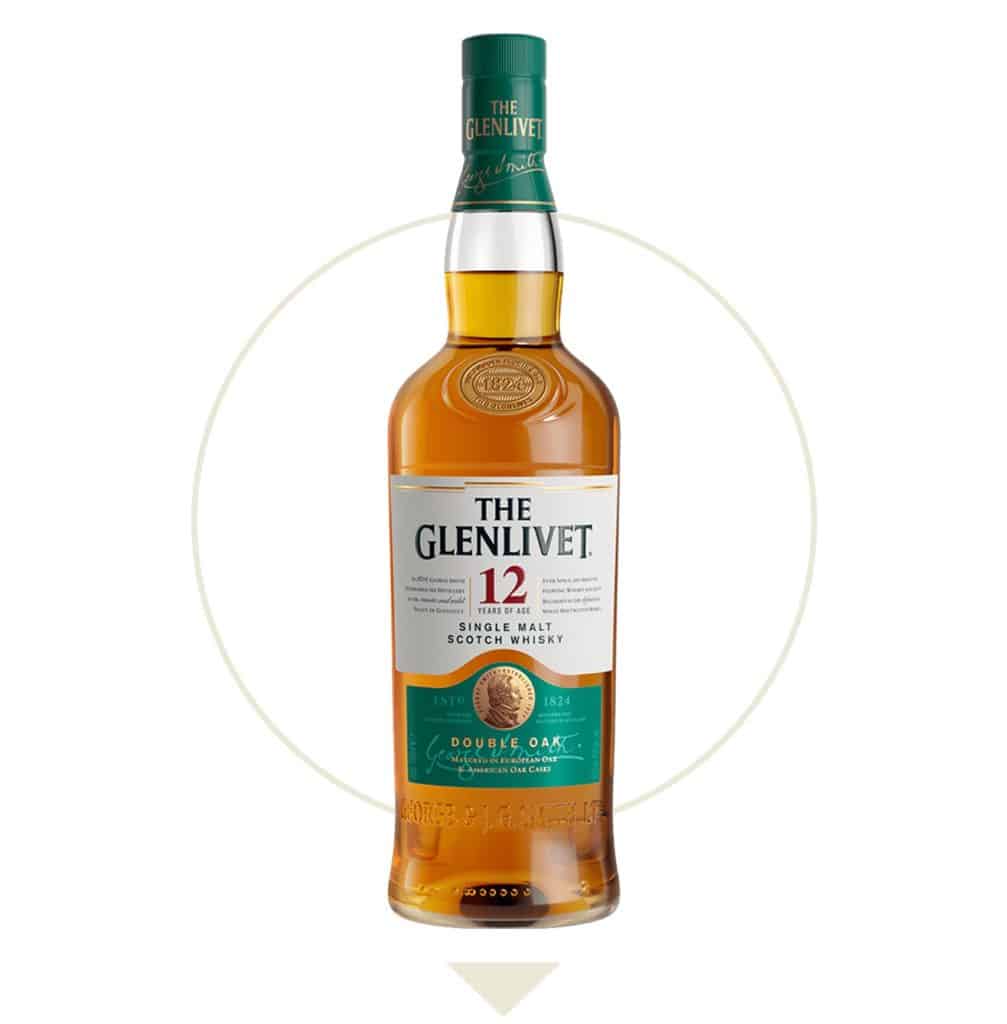Being a whiskey enthusiast, you’ve probably heard the term “single malt whiskey” tossed around quite a bit, but have you ever really understood what it means? Well, fear not, my friend, because we’ll unravel the mysteries behind this revered drink in this article. Let’s embark on a journey to explore the origins, production process, and unique qualities of single malt whiskey. So grab a glass, sit back, and get ready to discover the intricate world of this beloved spirit.
Definition
Single malt whiskey is a type of whiskey that is made from malted barley in a single distillery. It is known for its rich, complex flavors and is often enjoyed neat or on the rocks. Single malt whiskey is distilled in pot stills and aged in oak barrels, contributing to its distinct character. The term “single” refers to all the whiskey coming from one distillery, while “malt” indicates that only malted barley is used in its production. This sets single malt whiskey apart from other types, such as blended whiskey, which can contain a mixture of malt and grain distilleries.
Legal definition
The legal definition of single malt whiskey varies from country to country. In Scotland, for example, single malt whiskey must be produced at a single distillery using pot stills and aged in oak barrels for a minimum of three years. It cannot contain any additives, such as flavorings or colorings. Other countries, such as the United States and Japan, have regulations governing the production and labeling of single-malt whiskey.
Single malt characteristics
Single malt whiskey is known for its unique characteristics. It often has a rich, full-bodied flavor with fruit, vanilla, and spice notes. The aging process in oak barrels imparts vanilla, caramel, and oak flavors, while malted barley contributes to the whiskey’s distinct maltiness. Single malt whiskey can vary in sweetness, smokiness, and complexity depending on the type of barley used, the water source, and the aging process.
Production Process
Ingredients
The primary ingredient in single-malt whiskey is malted barley. Barley is soaked in water and allowed to germinate, during which the natural starches are converted into fermentable sugars. After germination, the barley is dried or killed to stop germination. The level of peat used during the malting process can also impact the whiskey’s flavor profile. Other ingredients, such as yeast and water, are also critical components of the production process.
Mashing
Mashing is the process of extracting sugars from the malted barley. The barley is ground into a coarse powder known as grist and mixed with hot water. This allows the enzymes in the barley to convert the starches into fermentable sugars. The mixture, known as mash, is then transferred to a mash tun, where it is stirred and allowed to rest. During this time, the sugars are extracted from the barley, producing a sugary liquid known as wort.
Fermentation
Fermentation is the process by which yeast converts the sugars in the wort into alcohol. The wort is transferred to fermentation vessels, typically wood or stainless steel, and yeast is added. The yeast consumes the sugars and produces alcohol, along with various flavor compounds. The length of fermentation can vary, but it is typically several days to a week. This fermentation period allows the yeast to produce the desired flavors and aromas in the whiskey.
Distillation
Distillation is the process by which alcohol is separated from the fermented liquid. The wort is heated in a pot still, causing the alcohol to vaporize. The vapor is then condensed and collected, resulting in a liquid with a higher alcohol content. The distillation process is typically carried out in two stages: wash distillation and spirit distillation. Each distillation removes impurities and helps to concentrate the desired flavors and aromas.
Maturation
After distillation, the whiskey is transferred to oak barrels for maturation. The type of wood used, along with the size and previous contents of the barrel, can all influence the final flavor of the whiskey. During maturation, the whiskey absorbs flavors from the wood and undergoes chemical reactions that contribute to its complexity. The duration of maturation can vary, but it is typically several years. Throughout this time, the whiskey develops its characteristic flavors and gains smoothness through a process known as aging.
Key Factors Influencing Flavor
Malted barley
The type of barley used in the production of single-malt whiskey can have a significant impact on the flavor. Different barley varieties can contribute notes of sweetness, maltiness, and nuttiness to the whiskey. The level of peat used during the malting process can also influence the flavor profile, with higher levels of peat resulting in a smokier character.
Water source
The water used to produce single-malt whiskey can significantly affect its flavor. Distilleries often source their water from local springs or wells, which can have unique mineral compositions. These minerals can contribute to the overall character of the whiskey, adding nuances of sweetness, saltiness, or earthiness.
Peat
Peat is a critical component in the malting process, and its presence can significantly influence the flavor of single-malt whiskey. Peat is a dried organic material burned to produce smoke used to dry the malted barley. The smoke from the burning peat imparts smoky, earthy flavors to the barley, carried through to the final whiskey. The level of peat used can vary, resulting in different levels of smokiness in the whiskey.
Yeast
The yeast used during fermentation plays a crucial role in shaping the flavor profile of single-malt whiskey. Different yeast strains can produce different flavor compounds, ranging from fruity and floral to spicy and estery. Distilleries often have their unique yeast strains, contributing to their whiskeys’ distinctiveness.
Distillation method
The distillation method a distillery employs can significantly impact its single-malt whiskey’s flavor and character. Pot stills, for example, are known for producing a heavier, full-bodied spirit with more pronounced flavors. Continuous stills, on the other hand, result in a lighter, smoother whiskey. The number of distillations and the shape and size of the stills can also influence the final flavor profile.
Maturation process
The process of maturation, or aging, in oak barrels is crucial in shaping the flavor of single malt whiskey. The type of oak used, whether American or European, can impart different flavors and aromas. The barrel’s previous contents, such as bourbon or sherry, can also contribute to the final flavor profile. Additionally, the duration of maturation and the conditions in which the whiskey is aged can all influence the overall character of the spirit.
Regional Variations
Scotch single malt
Scotch single-malt whiskey is perhaps the most well-known and revered type of single-malt whiskey. It is exclusively produced in Scotland and follows strict regulations regarding production and aging. Scotch single malts are complex, with flavors ranging from fruity and floral to smoky and peaty. The regions of Scotland, such as Islay, Speyside, and Highland, each have distinctive styles and flavor profiles.
Irish single malt
Irish single malt whiskey, like Scotch, is made from malted barley and distilled in pot stills. However, Irish single malts are typically triple distilled, resulting in a smoother, lighter spirit. Irish whiskey is known for its approachability and versatility, with flavors that are often fruity and with less emphasis on smokiness. The distilleries in Ireland produce a range of single malts, each with unique characteristics.
American single malt
American single malt whiskey is a relatively new category that has recently gained popularity. Produced primarily in the United States, American single malts are known for their rich, flavorful profiles. Different grains, such as barley, corn, or rye, can contribute to various flavors. American single malts can be aged in various barrels, including bourbon, sherry, or wine, resulting in unique and complex flavor profiles.
Japanese single malt
Japanese single malt whiskey has gained international recognition for its exceptional quality and craftsmanship. Inspired by the Scottish tradition, Japanese distilleries have crafted unique styles and flavor profiles. Japanese single malts are often characterized by balance and elegance, with flavors ranging from delicate and floral to rich and spicy. The attention to detail in the production process and the use of traditional Japanese techniques contribute to the exceptional quality of Japanese single malt whiskey.
Other countries
While Scotland, Ireland, the United States, and Japan are the most renowned countries for producing single-malt whiskey, others have also entered the market. Countries such as Australia, Canada, India, and Taiwan have all started producing single malt whiskeys, each with distinct styles and flavor profiles. These emerging whiskey regions showcase single malt whiskey’s global appeal and diversity.
Tasting Notes
Flavor profiles
Single malt whiskey offers a wide range of flavor profiles, depending on the region, distillery, and maturation process. Scotch single malts can range from light and delicate to rich and peaty. Irish single malts often showcase fruity and floral notes, while American single malts can have bold and spicy flavors. Japanese single malts are known for their balance and complexity. Within each category, individual distilleries and expressions offer unique flavor profiles, providing endless opportunities for exploration and discovery.
Aromas
Regarding the aroma of single-malt whiskey, the possibilities are vast. Scotch single malts can offer honey, citrus, smoke, and spices aromas. Irish single malts often present apples, pears, vanilla, and herbs fragrances. American single malts may showcase notes of caramel, cinnamon, roasted nuts, and oak. Japanese single malts can exude scents of flowers, tropical fruits, sandalwood, and green tea. Each aroma adds to the overall sensory experience and can evoke a sense of place and craftsmanship.
Color
The color of single malt whiskey can range from pale straw to deep amber, depending on the aging process and type of cask used. Scotch single malts can vary in color from light gold to rich amber, with some expressions exhibiting a reddish hue. Irish single malts are lighter in color, often displaying a pale gold or straw hue. American single malts can range from light amber to dark mahogany, with the aging process in charred oak barrels contributing to a deeper color. Japanese single malts can have a golden hue, showcasing the influence of their particular maturation methods.
Texture
The texture of single malt whiskey can vary from light and smooth to rich and velvety. Some expressions may have a light, refreshing mouthfeel, while others can coat the palate with a luscious, oily texture. Factors such as the type of grain used, the distillation method, and the aging process all contribute to the overall texture of the whiskey. The texture adds another layer of complexity to the drinking experience and can enhance the enjoyment of the flavors.
Finish
The finish of single malt whiskey refers to the lingering taste and sensations left on the palate after swallowing. Scotch single malts can have long, smoky finishes, while Irish single malts often showcase a smooth, mellow finish. American single malts can leave a warm, spicy finish, while Japanese single malts may offer a delicate and lingering impression. The finish gives the whiskey a final impression and can indicate its overall quality and craftsmanship.
Appreciation and Pairing
Glassware
When appreciating single malt whiskey, the choice of glassware can significantly enhance the experience. A tulip-shaped glass, commonly known as a Glencairn glass, is often recommended for tasting single malts. This glass shape allows for the concentration of aromas, allowing the drinker to savor the whiskey’s fragrances fully. The broad base of the glass also allows for gentle swirling, which can release additional flavors and aromas. Using the appropriate glassware can help to maximize the sensory experience and fully appreciate the nuances of the whiskey.
Serving techniques
To fully appreciate the flavors and aromas of single malt whiskey, it is often recommended to enjoy it neat or with a small amount of water. Adding a few drops of water can help to release additional aromas and soften the alcohol, allowing for a more balanced and enjoyable drinking experience. Some individuals may also prefer drinking whiskey on the rocks, which can slightly cool and dilute the spirit. Ultimately, the choice of serving technique is a matter of personal preference, and there is no right or wrong way to enjoy single malt whiskey.
Food pairing options
Pairing food with single-malt whiskey can be a delightful way to enhance the flavors of the whiskey and the food. Light and delicate single malts, such as those from Speyside or Ireland, can pair well with seafood, salads, and lighter cheeses. Rich and peaty single malts, such as those from Islay or the Highlands, can complement smoked or grilled meats, strong cheeses, and dark chocolate. The individual flavors and characteristics of the whiskey should be considered when selecting food pairings, as the goal is to create a harmonious balance that enhances the overall dining experience.
Popular Single Malt Whiskey Brands
Scotch brands
Some popular Scotch single malt whiskey brands include Glenfiddich, Macallan, Lagavulin, Ardbeg, and Talisker. These distilleries produce various expressions, each with a distinct style and flavor profile. Scotch single malts are highly regarded for their craftsmanship and heritage, and these brands represent the rich tradition of Scottish whiskey.
Irish brands
Notable Irish single malt whiskey brands include Jameson, Bushmills, Teeling, and Redbreast. Irish single malts are known for their smoothness and approachability, making them a favorite choice for whiskey novices and enthusiasts. These brands represent the rich Irish whiskey tradition and showcase the diversity of flavors in this category.
American brands
American single malt whiskey brands that have gained recognition include Westland, Stranahan’s, Balcones, and St. George Spirits. These distilleries have helped to popularize the American single malt category, showcasing the unique flavors and profiles that can be achieved using different grains and aging techniques. American single malts offer a distinctively American take on this traditional style of whiskey.
Japanese brands
Japanese single malt whiskey has gained international acclaim, and brands such as Yamazaki, Hakushu, Nikka, and Chichibu have become highly sought after. Japanese distilleries are known for their attention to detail and commitment to craftsmanship, producing exceptional quality whiskeys. Japanese single malts offer a unique and refined flavor profile, often characterized by balance and elegance.
Other notable brands
In addition to the well-known Scotch, Irish, American, and Japanese brands, other notable single-malt whiskey brands exist worldwide. For example, Australia is home to distilleries such as Sullivan’s Cove and Starward, which have gained recognition for their high-quality single malts. Canada is known for distilleries like Glen Breton and Shelter Point, which have embraced the single malt category and offer unique expressions. With brands like Amrut, India has also made its mark in single-malt whiskey. These brands showcase the global reach and diversity of the single malt category.
Collecting and Investing
Limited editions
Limited edition collectors and investors can highly seek after single malt whiskeys. These special releases often have unique characteristics and are produced in limited quantities. Limited editions can include expressions aged for more extended periods, finished in unique cask types, or released to commemorate significant milestones. Collecting limited editions can be a way to preserve the history and craftsmanship of a particular distillery while also providing potential investment opportunities as the bottles become more sought after over time.
Age statement
Age statements on single malt whiskey bottles indicate the duration the whiskey has been aged in oak barrels. The age statement is essential for many whiskey enthusiasts, as it can indicate the whiskey’s complexity and quality. Older whiskeys are often associated with more profound, more developed flavors and excellent smoothness. While age can be a valuable indicator, it is essential to remember that flavor is subjective, and younger whiskeys can still offer exceptional quality and unique flavor profiles.
Market trends
The market for single malt whiskey has experienced significant growth in recent years, with increased demand from enthusiasts and collectors. As more people develop an appreciation for single malt whiskey, the market has responded with a wide range of expressions and limited editions. Additionally, the trend towards craft distilleries has further expanded the offerings within the single malt category. Keeping an eye on market trends can help collectors and investors identify emerging brands and limited editions with potential future value.
Investment considerations
Investing in single-malt whiskey can be an intriguing option for diversifying their portfolios or exploring alternative investments. However, it is essential to understand that investing in whiskey carries risks and requires careful consideration. Factors such as brand reputation, rarity, provenance, and condition of the bottles all play a role in determining the value of a whiskey investment. Additionally, the whiskey market can be subject to fluctuations, making investing in whiskey with a long-term perspective essential.
Myths and Misconceptions
Expensive means better quality
While it is true that some expensive single malt whiskeys can offer exceptional quality and craftsmanship, the price of a whiskey does not always correlate directly with its quality. The value of a whiskey can be influenced by factors such as brand reputation, rarity, and demand. A high price tag does not guarantee that every individual will enjoy the whiskey, as flavor preferences are subjective. Exploring a wide range of whiskeys and focusing on personal taste and enjoyment rather than solely on price is essential.
Single malt is always smoky.
While smokiness is often associated with specific regions and styles of single malt whiskey, not all single malt are smoky. The level of smokiness in a whiskey can vary depending on factors such as the type of barley used, the use of peat during malting, and the distillation and maturation processes. Many non-peated single malts offer a range of flavors, from fruity and floral to rich and oaky. Exploring different styles to find the flavor profiles that suit individual preferences is essential.
All single malts are from Scotland.
While Scotland is renowned for its single malt whiskey production, it is not the only country that produces this style of whiskey. Countries such as Ireland, the United States, and Japan have their traditions and regulations governing single-malt whiskey production. Additionally, emerging regions such as Australia, Canada, India, and Taiwan have entered the market with unique expressions. Exploring single malts from different countries can provide a diverse and exciting whiskey journey.
Future Trends
Craft distilleries
One of the future trends in single malt whiskey is the continued growth of craft distilleries. Craft distilleries focus on small-batch production, often using locally sourced ingredients and traditional production methods. This emphasis on craftsmanship and quality has resulted in a proliferation of unique and innovative single-malt whiskeys. Craft distilleries offer whiskey enthusiasts the opportunity to discover new flavors and support small-scale producers pushing traditional whiskey production’s boundaries.
Flavored single malts
Another trend in the single malt whiskey industry is the emergence of flavored expressions. Traditionally, single-malt whiskey was appreciated for its natural flavors and characteristics. However, some distilleries are now experimenting with adding natural flavors to their single malts. These flavored whiskeys can offer a different and approachable introduction to single malts, appealing to a broader range of palates. While traditionalists may prefer the purity of unflavored single malts, flavored expressions provide a new avenue for exploration and enjoyment.
Sustainable production
As the demand for single malt whiskey grows, the industry increasingly focuses on sustainable production methods. Distilleries invest in renewable energy sources, water conservation initiatives, and waste reduction strategies. In addition, some distilleries are exploring organic farming practices and locally sourced ingredients to reduce their environmental impact. Sustainable production benefits the environment and contributes to the whiskey industry’s long-term viability and reputation.
In conclusion, single malt whiskey is a diverse and fascinating whiskey category. It offers a wide range of flavor profiles and styles, from Scotland’s smoky and peaty expressions to the delicate and balanced whiskeys of Japan. Single malt whiskey has a rich history and is produced in various regions worldwide, each with distinct traditions and regulations. Whether you are a whiskey enthusiast, collector, or an individual looking to explore new flavors, single malt whiskey offers many opportunities to satisfy your palate and enhance your appreciation for this beloved spirit.





